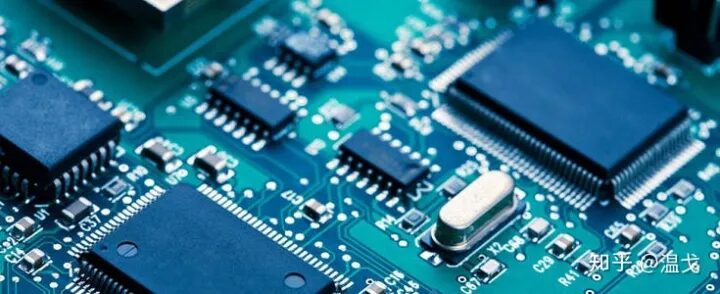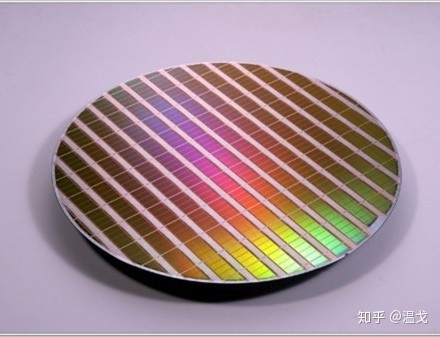
A semiconductor is a general term for a type of material, an integrated circuit is a large collection of circuits made from semiconductor materials, and chips are products formed by different types of integrated circuits or a single type of integrated circuit.
To relate this to everyday items, semiconductors are like the fibers used to make paper, integrated circuits are a stack of paper, and chips are a book or notebook.
Currently, the semiconductor industry is striving to improve in three main ways:
1. Finding new fibers to create better reading materials.
3. Using color printing, coated paper, and other methods in books or notebooks to enhance the user experience.
As a chip (integrated circuit) practitioner, I am a semiconductor equipment sales person.
This question is perfect for me, as I have always introduced myself with the sentence that contains all three keywords.
A semiconductor refers to materials whose electrical conductivity is between that of conductors and insulators at room temperature. Common semiconductor materials include silicon, germanium, and gallium arsenide, with silicon being the most influential in various semiconductor applications.
Compared to conductors and insulators, the discovery of semiconductor materials was the latest, only being recognized by the academic community in the 1930s after improvements in material purification technology.
Semiconductors mainly consist of four components: integrated circuits, optoelectronic devices, discrete devices, and sensors. Since integrated circuits account for over 80% of the devices, semiconductors are often equated with integrated circuits.
Integrated circuits can integrate both analog and digital circuits onto a single chip, creating devices like analog-to-digital converters and digital-to-analog converters. This type of circuit offers smaller size and lower cost.
Typically, when we refer to chips, we mean the small black boxes that we can see, which are packaged, as shown below:

Chip


In summary, we can consider semiconductors > integrated circuits = chips
1. What is a Chip
A chip, also known as a microcircuit, microchip, or integrated circuit (IC), refers to a silicon wafer that contains integrated circuits, which is very small and often part of a computer or other electronic device.
A chip is a general term for semiconductor component products, serving as the carrier of integrated circuits, made from wafer cutting.
A silicon wafer is a small piece of silicon that contains integrated circuits, and it is part of a computer or other electronic device.
2. What is a Semiconductor
A semiconductor refers to materials whose electrical conductivity is between that of conductors and insulators. For example, diodes are devices made from semiconductors. Semiconductors are materials whose conductivity can be controlled, ranging from insulators to conductors.
From both technological and economic development perspectives, the importance of semiconductors is enormous. Most modern electronic products, such as computers, mobile phones, or digital recorders, have core components closely related to semiconductors. Common semiconductor materials include silicon, germanium, and gallium arsenide, with silicon being the most influential in commercial applications.
Materials exist in various forms, including solid, liquid, gas, and plasma. We typically refer to materials with poor conductivity, such as coal, artificial crystals, amber, and ceramics, as insulators. In contrast, metals such as gold, silver, copper, iron, tin, and aluminum are referred to as conductors. We can simply define materials that fall between conductors and insulators as semiconductors.
3. What is an Integrated Circuit
An integrated circuit (IC) is a type of miniature electronic device or component. It integrates transistors, resistors, capacitors, and inductors required for a circuit into a small piece or several small pieces of semiconductor wafers or substrate, then encapsulates them in a casing to form a miniature structure with the desired circuit functionality; all components are structurally integrated, making significant progress towards miniaturization, low power consumption, intelligence, and high reliability. It is denoted by the letters “IC” in circuits.
The inventors of the integrated circuit are Jack Kilby (for germanium-based integrated circuits) and Robert Noyce (for silicon-based integrated circuits). Most applications in today’s semiconductor industry are based on silicon integrated circuits.
Integrated circuits are a new type of semiconductor device developed in the late 1950s to 1960s. They are formed by integrating semiconductors, resistors, capacitors, and their interconnections into a small silicon wafer through semiconductor manufacturing processes such as oxidation, photolithography, diffusion, epitaxy, and aluminum evaporation, then soldered and encapsulated in a casing. The packaging can come in various forms, including round, flat, or dual in-line.
Integrated circuit technology includes chip manufacturing technology and design technology, mainly reflected in processing equipment, processing technology, packaging testing, mass production, and design innovation capabilities.
4. What is the Difference Between a Chip and an Integrated Circuit?
The emphasis of expression is different. A chip is just a chip, generally referring to the visible square object with many small pins or the clearly visible square object. However, chips also include various types, such as baseband, voltage conversion, etc. A processor emphasizes functionality, referring to the unit that performs processing, which can be MCU, CPU, etc.
The range of integrated circuits is much broader; integrating some resistors, capacitors, and diodes counts as an integrated circuit, which may be a chip for analog signal conversion or a chip for logic control, but overall, this concept leans more towards the underlying components.
Integrated circuits refer to active devices, passive components, and their interconnections formed on semiconductor substrates or insulating substrates, creating closely related and internally correlated electronic circuits. They can be divided into three main branches: semiconductor integrated circuits, film integrated circuits, and hybrid integrated circuits.
A chip is a general term for semiconductor component products, serving as the carrier of integrated circuits, made from wafer cutting.
5. What is the Relationship and Difference Between Semiconductor Integrated Circuits and Semiconductor Chips?
A chip is an abbreviation for integrated circuits; in fact, the true meaning of the term chip refers to a tiny semiconductor chip inside the integrated circuit package, also known as the die. Strictly speaking, chips and integrated circuits cannot be used interchangeably. Integrated circuits are made through semiconductor technology, thin-film technology, and thick-film technology; anything that miniaturizes a circuit with a specific function into a packaged form can be called an integrated circuit. Semiconductors are materials that fall between good conductors and non-good conductors (or insulators). Semiconductor integrated circuits include semiconductor chips and related peripheral circuits.
The differences between semiconductor integrated circuits and semiconductor chips are:
2) Semiconductor Chips
Semiconductors also follow trends like automobiles. In the 1970s, American companies such as Intel dominated the dynamic random-access memory (D-RAM) market. However, with the emergence of large computers, Japanese companies took the lead in the 1980s due to the need for high-performance D-RAM.
Source: Zhihu
Reviewers: Zhang Jingwei, Heng Gege, Wang Jing
